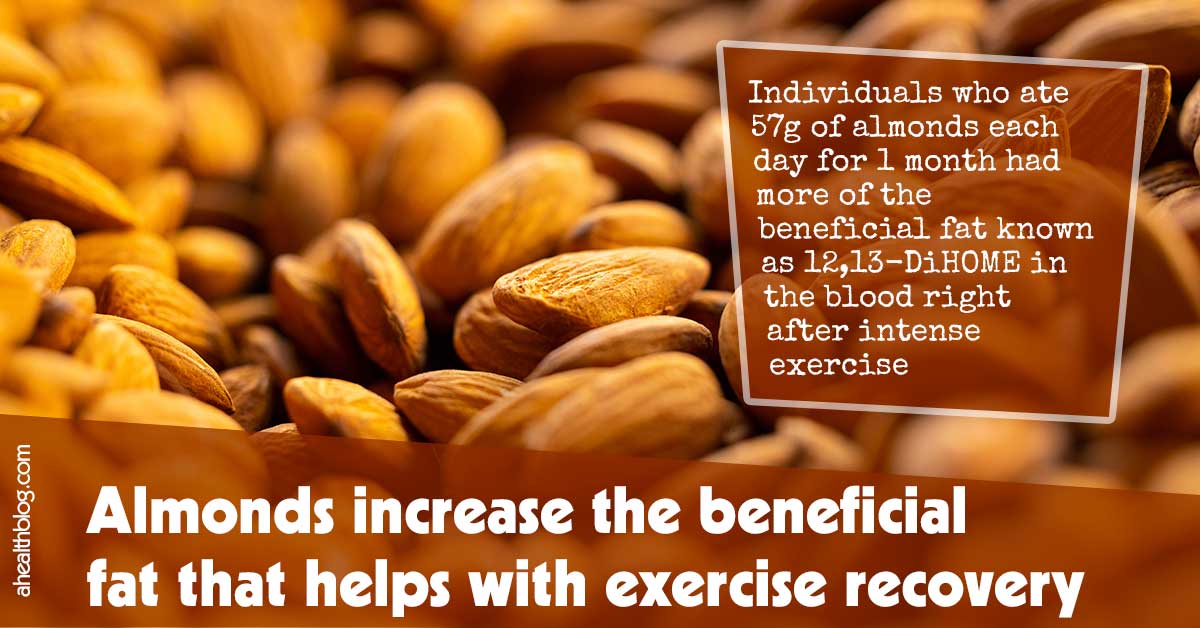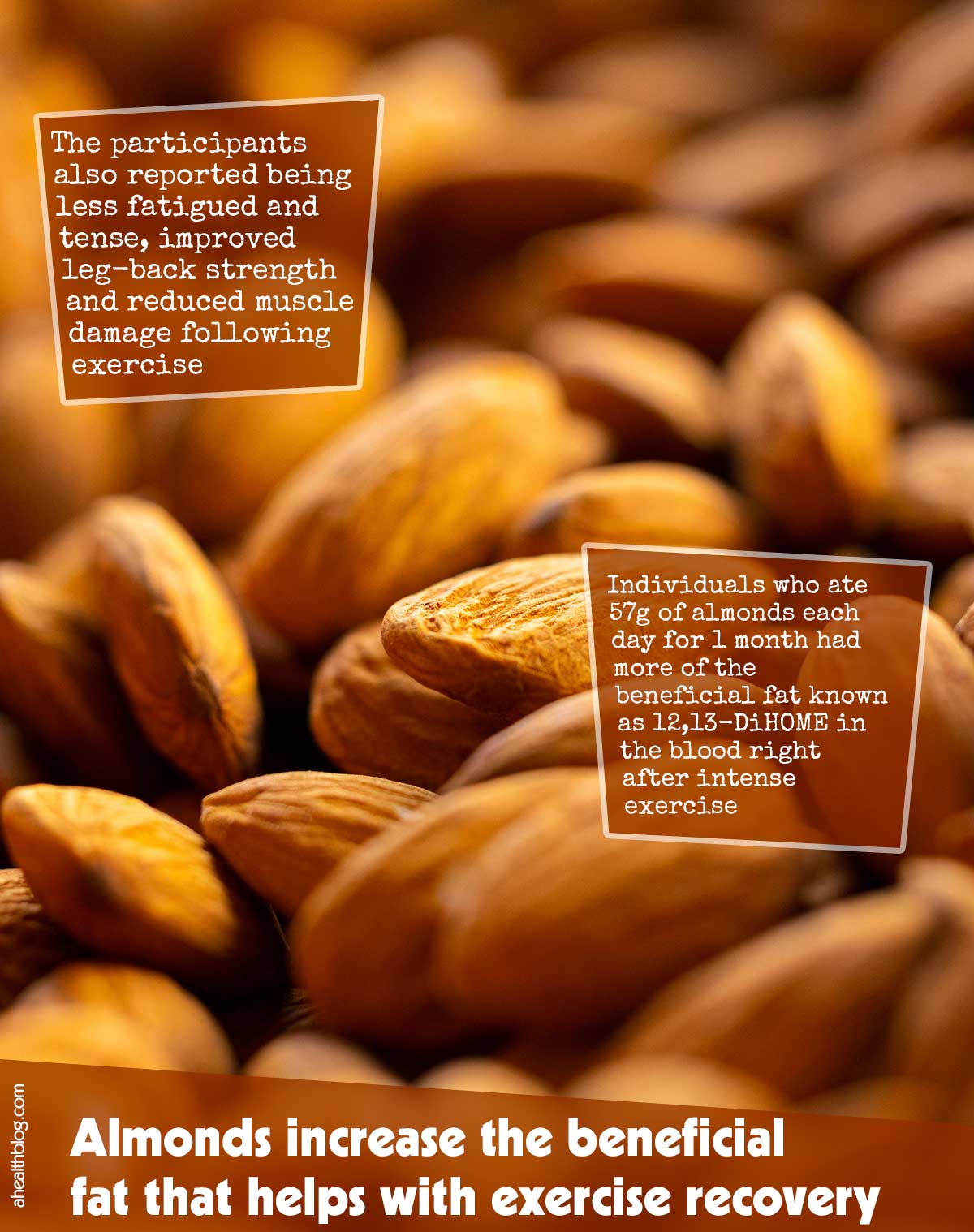A study has revealed that individuals who consumed 57g of almonds each day for 1 month had more of the beneficial fat known as 12,13-DiHOME in the blood right after an intense exercise session compared to individuals in a control group.1✅ JOURNAL REFERENCE DOI: 10.3389/fnut.2022.1042719
This molecule, an oxidized fat known as oxylipin is synthesized by brown fat tissue from linoleic acid and has a beneficial outcome on energy regulation and metabolic health.
The participants also reported being less fatigued and tense, improved leg-back strength and reduced muscle damage following exercise compared to the individuals in the control group.
The study involved 26 women and 38 men who didn’t participate in regular weight training between 30 and 65 years of age. About half were allocated to the group that consumed almonds, and the other half was allocated to a control group that consumed a cereal bar each day that matched the calorie content of the almonds.
The researchers obtained urine and blood samples prior to and following the 4-week dietary supplementation period. Measures of performance included a shuttle run test of 50 meters, a Wingate anaerobic test lasting 30 seconds, and leg-back, bench press, and vertical jump strength exercises.
Additional urine and blood samples were obtained right after this 90-minute ‘eccentric exercise’ session and every day for 4 subsequent days.
The ‘Profile of Mood States’ (POMS) questionnaire was completed by the individuals following each blood draw to evaluate their mental state and to rate delayed onset muscle soreness, or the stiffness and pain experienced following strenuous or unaccustomed exercise, on a 10-interval scale.
The 90-minute exercise increased their self-reported feeling of muscle soreness and muscle damage, along with an increased POMS score, suggesting self-reported reduced vigor and increased anxiety, fatigue, and depression.
The exercise also contributed to a transient increase of pro-inflammatory cytokine levels in the blood, consistent with minor damage to the muscle. These cytokine changes were however identical in the cereal bar and almond groups.
The concentration of the beneficial 12,13-DiHOME was 69% higher right after exercise in the almond group individual’s blood plasma compared to individuals in the control group. 12,13-DiHOME is known to increase fatty acid transport and its skeletal muscle uptake, with the overall effect of metabolic recovery stimulation following exercise.
The opposite pattern was observed for the mildly toxic 9,10-diHOME oxylipin, which was 40% higher right after exercising in the control group’s blood compared to the almond group.
Unlike the beneficial 12,13-DiHOME oxylipin, 9,10-diHOME has been found to have negative outcomes on general health and the recovery of the body to exercise.
The researchers determined that daily almond consumption results in a metabolism change, oxidative stress and inflammation downregulation from exercise and faster recovery enabling for the body.
They conclude that almonds provide a complex and unique polyphenol and nutrient mixture that could help in supporting metabolic recovery from stressful levels of exercise. Almonds are high in vitamin E, protein, minerals, healthy types of fats, and fiber.
The almond’s brown skin contains polyphenols that make their way to the large intestine and help control oxidative stress and inflammation.




